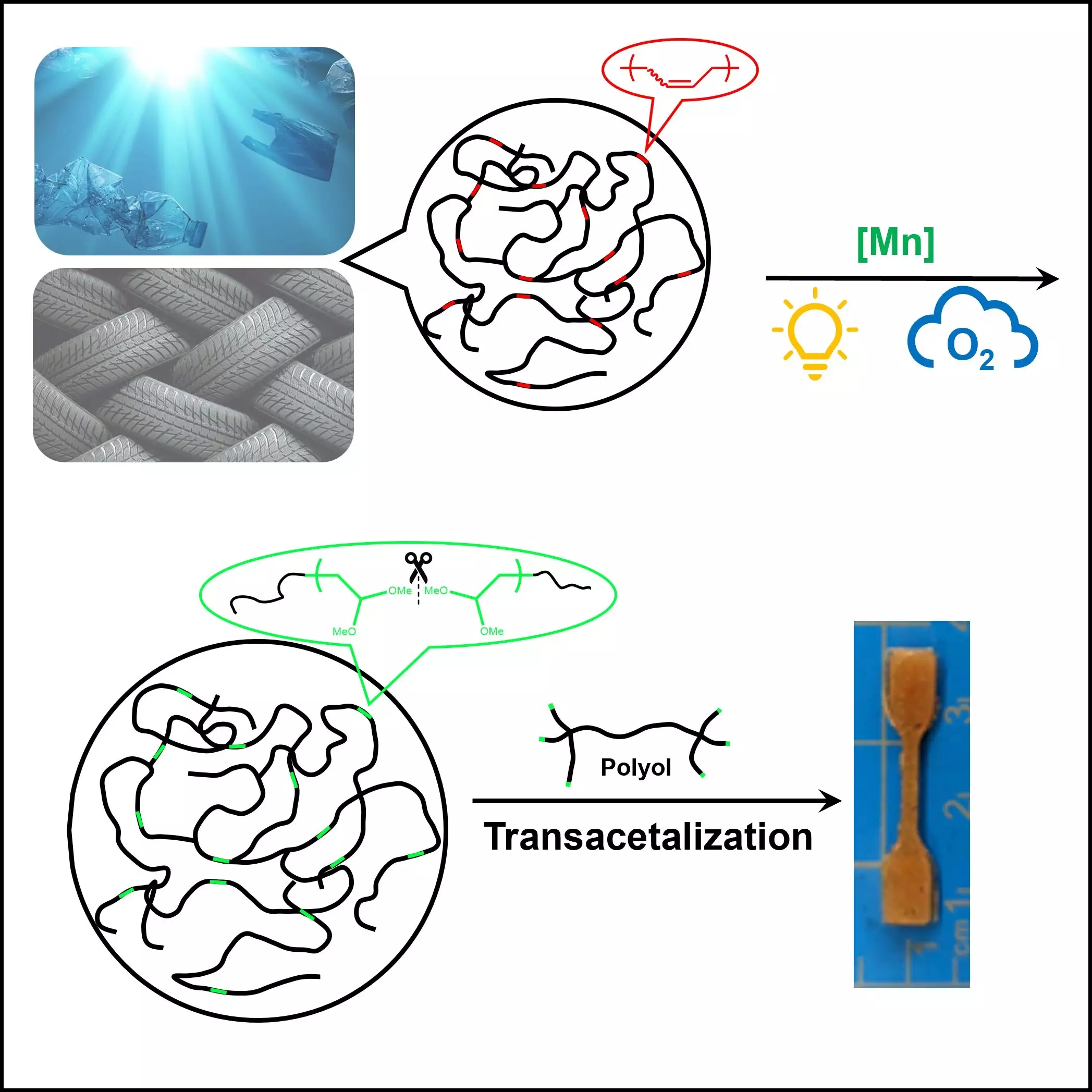In an era where plastic pollution looms large over environmental discussions, Dr. Junpeng Wang and his research team from The University of Akron have illuminated a path toward more effective recycling methods for unsaturated polymers, particularly rubber and plastics. Their innovative study, published in Cell Reports Physical Science, presents an exciting leap forward in addressing the staggering reality that of the 8.3 billion metric tons of plastics produced since the 1950s, a mere fraction—about 600 million metric tons—has been adequately recycled. This staggering statistic highlights the urgent need for novel recycling approaches.
The Limitations of Existing Methods
Historically, the recycling of polymers, especially polyolefins—responsible for over half of global plastic production—has faced numerous hurdles. The inherent stability of these materials, due to their hydrocarbon-based structure, has resulted in resistant polymers that do not break down easily. Conventional techniques for oxidative cleavage, such as ozonolysis and permanganate oxidation, while effective in certain contexts, have significant drawbacks: they are often energy-intensive, generate harmful by-products, and necessitate complex operational conditions. Such limitations render these approaches impractical for widespread recycling efforts, thereby exacerbating environmental deterioration.
A Breakthrough Approach
Wang’s research proposes a transformative method that utilizes oxygen and light to instigate polymer breakdown, showcasing a remarkable blend of simplicity and efficiency. The innovative catalyst introduced by the team activates under light, allowing the polymer degradation process to occur at ambient temperatures and pressures. This feature marks a substantial advancement from traditional methods, which typically rely on harsher conditions. The adoption of an accessible, green oxidant like O2 not only paves the way for a less energy-consuming process but also helps mitigate the adverse environmental impact associated with conventional recycling techniques.
The Societal and Environmental Implications
As plastic waste continues to accumulate in landfills and oceans, the work of Wang and his team bears tremendous significance for sustainability efforts. Their research highlights a crucial intersection of scientific innovation and ecological responsibility, empowering a pathway towards a circular economy. If implemented, this breakthrough could drastically reduce the volume of plastic waste entering our environments while simultaneously fostering a more sustainable relationship with synthetic materials.
Moreover, this study underscores the importance of interdisciplinary collaboration. The contributions from both current and former students of Wang highlight a nurturing academic environment that prioritizes innovative thinking and real-world applications. By bridging gaps between theoretical research and practical implementation, the team exemplifies how academic institutions can lead the charge in combating pressing global issues.
A New Era for Polymer Science
The significance of Wang’s findings extends beyond just recycling methodologies; it represents a vital shift in how we approach polymer science as a whole. By enhancing our understanding of degradation processes through controlled methods that prioritize environmental integrity, this research will likely inspire further advancements within the field. It serves as a poignant reminder that with creativity, collaboration, and a commitment to sustainable practices, we can transform existing challenges into opportunities for innovation. This research not only champions a solution to one of the most daunting environmental crises we face today but also motivates the broader scientific community to rethink the lifecycle of materials we use every day.


Leave a Reply